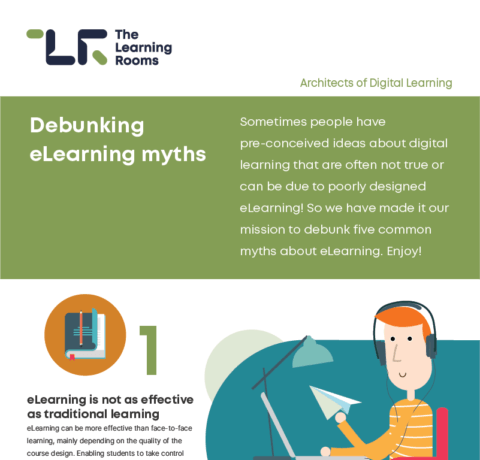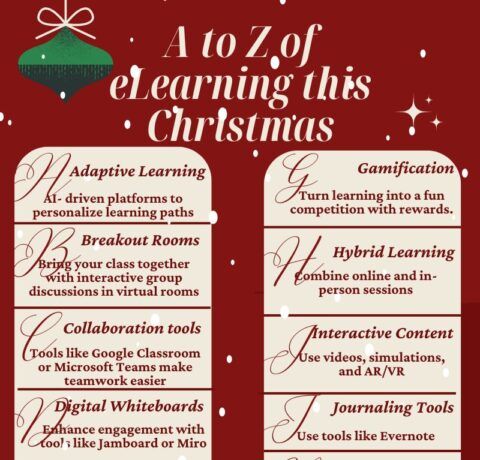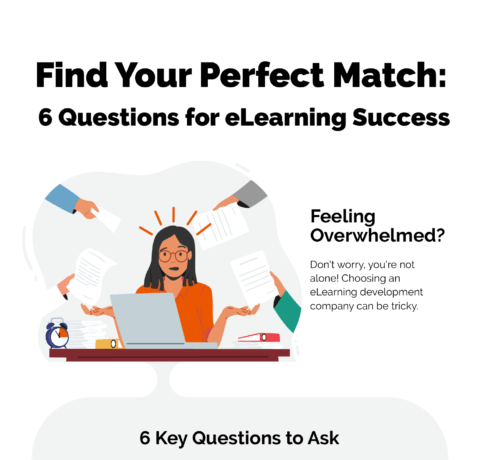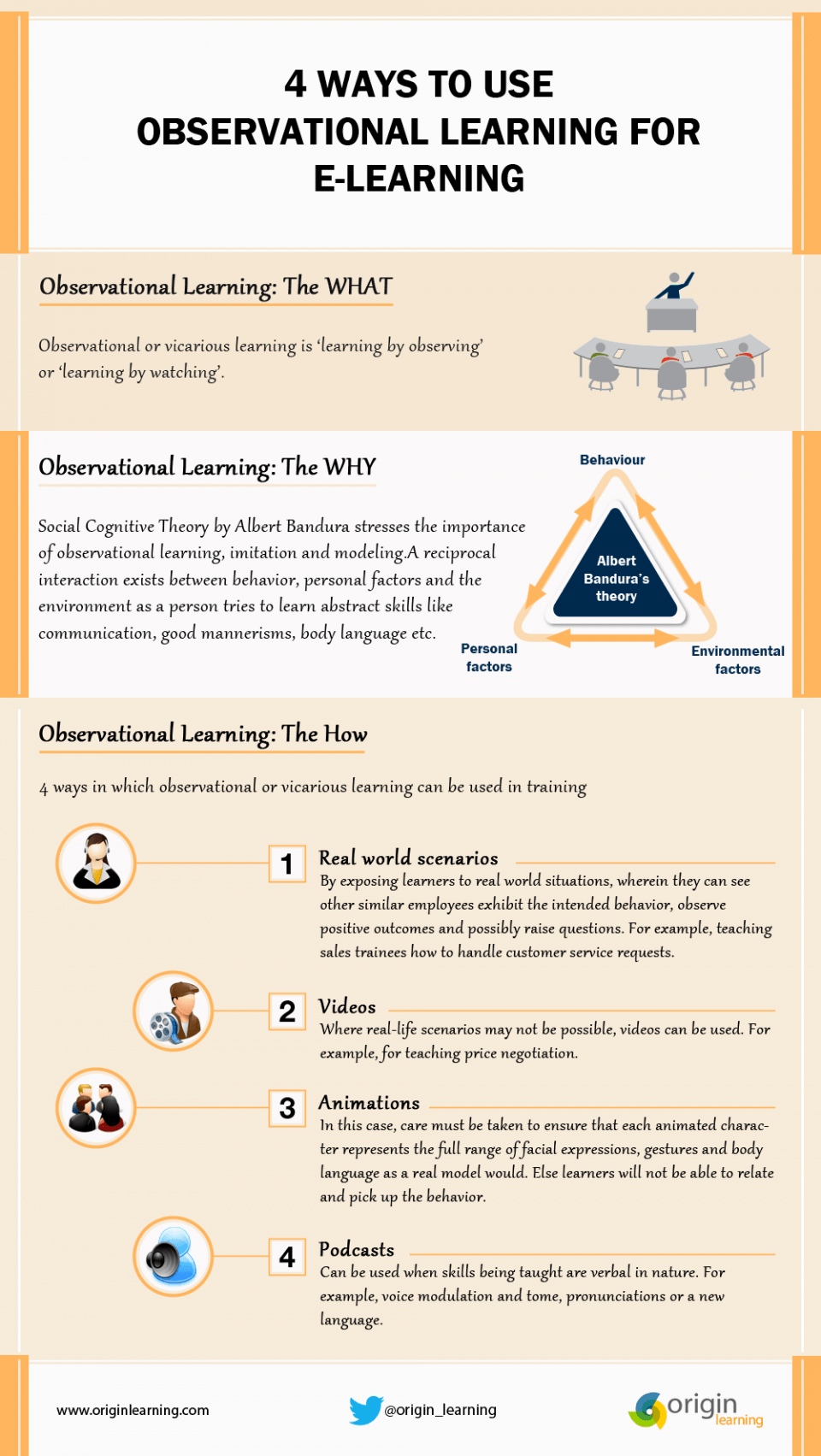4 Ways to Use Observational Learning for eLearning Infographic
Knowledge and skills like how to complete a process or accomplish tangible tasks can be learnt by experimentation or reading. However, soft skills may not be so easy to teach. Vicarious or observational learning is learning by watching, since certain behaviors or skills simply cannot be learnt by attending a lecture about them or reading an eLearning module.The 4 Ways to Use Observational Learning for eLearning Infographic presents instances of how you can merge vicarious learning design with your existing training or eLearning strategy.
Observational Learning: The WHY
Social Cognitive Theory by Albert Bandura stresses the importance of observational learning, imitation and modeling.A reciprocal interaction exists between behavior, personal factors and the environment as a person tries to learn abstract skills like communication, good mannerisms, body language etc.
Observational Learning: The HOW
1. Real world scenarios
By exposing learners to real world situations, wherein they can see other similar employees exhibit the intended behavior, observe positive outcomes and possibly raise questions. For example, teaching sales trainees how to handle customer service requests.
2. Videos
Where real-life scenarios may not be possible, videos can be used. For example, for teaching price negotiation.
3. Animations
In this case, care must be taken to ensure that each animated character represents the full range of facial expressions, gestures and body language as a real model would. Else learners will not be able to relate and pick up the behavior.
4. Podcasts
Can be used when skills being taught are verbal in nature. For example, voice modulation and tome, pronunciations or a new language.







You can adjust your cookie preferences here.